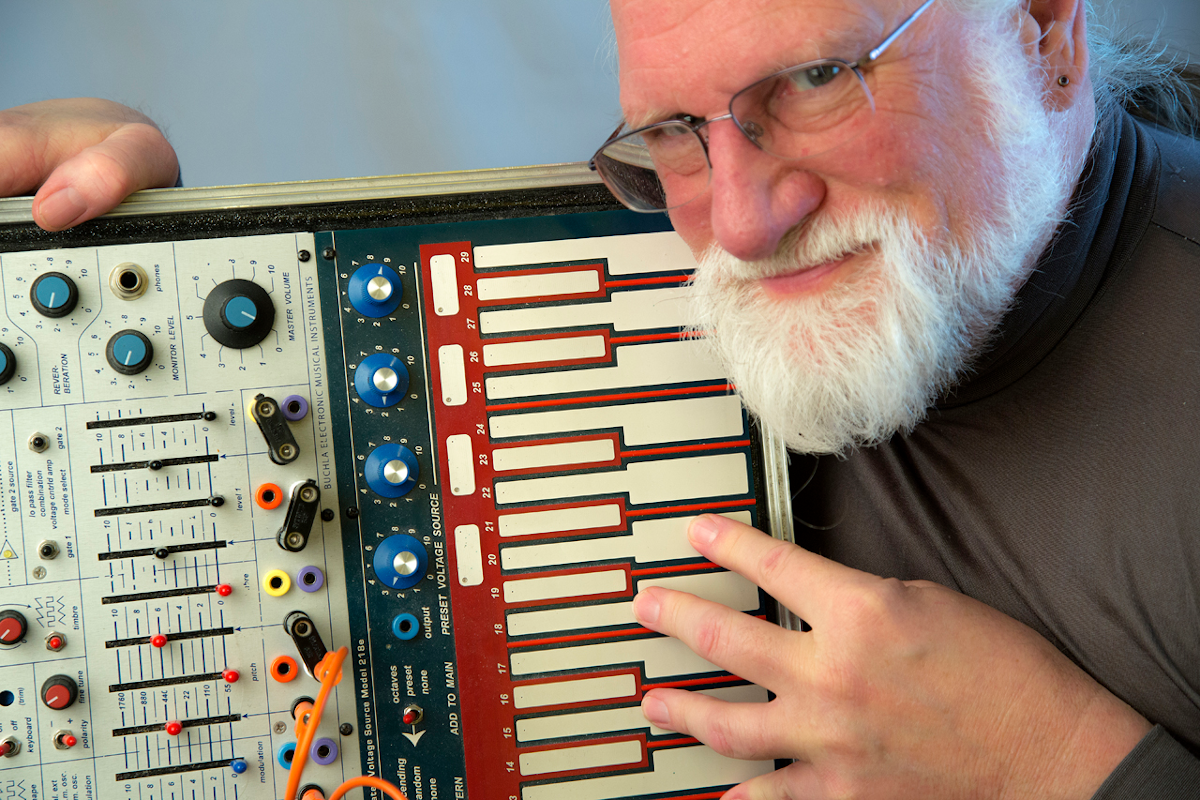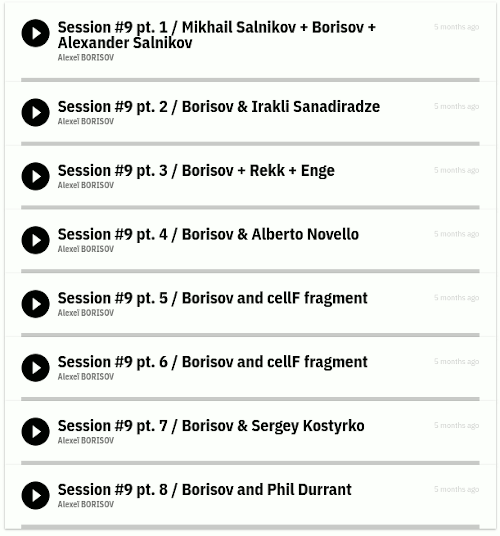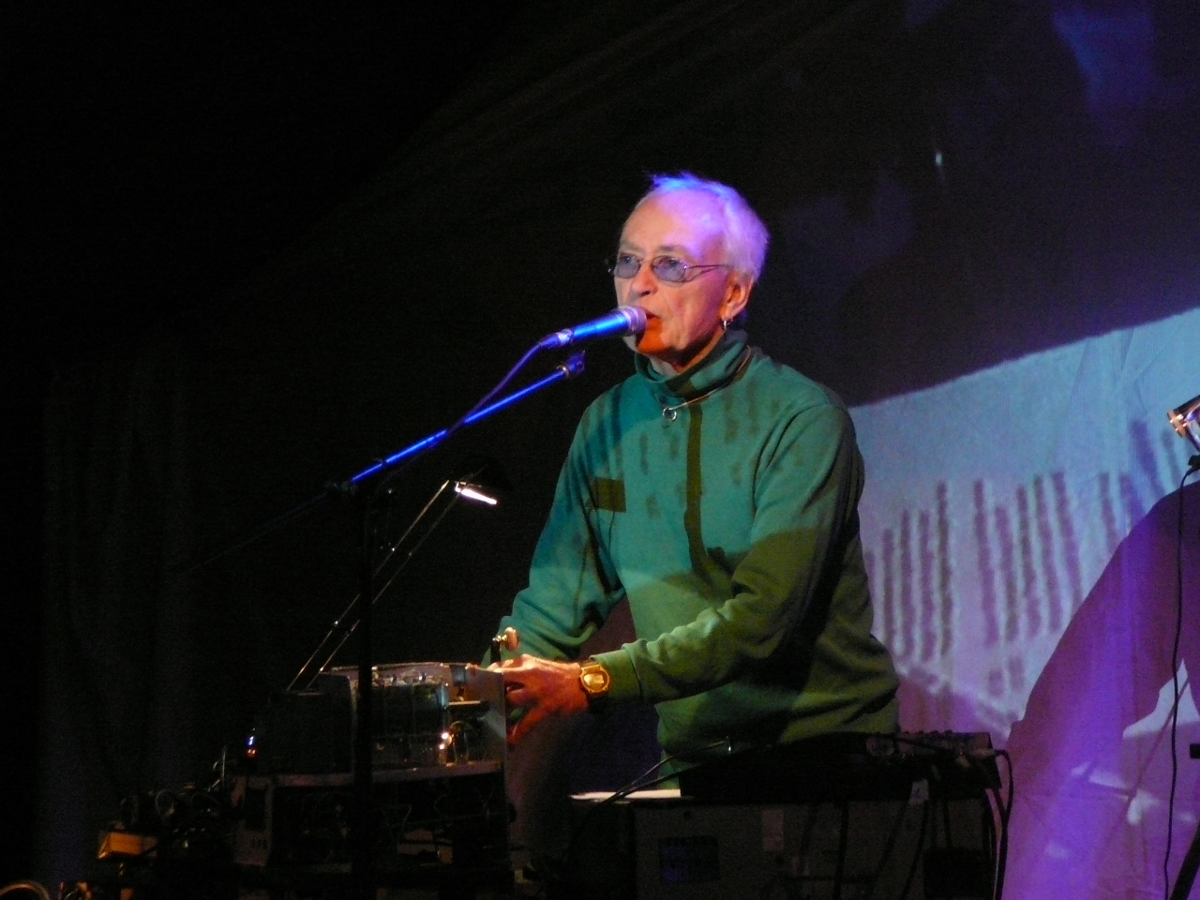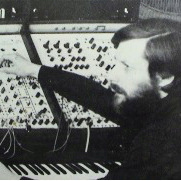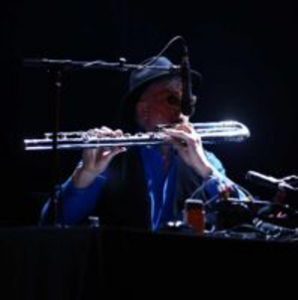 Ahead of this year’s Fort Process festival, headliner Rhys Chatham kindly lent his words to some questions posed by Kev Nickells. For this edition of the festival, he’ll be bringing a performance of his solo work Pythagorean Dream.
Ahead of this year’s Fort Process festival, headliner Rhys Chatham kindly lent his words to some questions posed by Kev Nickells. For this edition of the festival, he’ll be bringing a performance of his solo work Pythagorean Dream.
Kev Nickells: So the first thing I’d like to pick up on is a point from the last interview I did with you — there was a bit where a distinction was drawn between “from the heart” music (which is how I described Outdoor Spell for Freq) and Crimson Grail or Die Donnergötter being more conceptual — starting from an idea. I was wondering where Pythagorean Dream fits into that schema?
Rhys Chatham: I developed Pythagorean Dream over a period of about seven years. It started out as a solo for me on Bb trumpet. After a few years of performing the solo I thought, “hmm… I’m known as a guitarist, it seems a bit of a shame not to include guitar in my solo project…”, so I tuned an electric guitar in a tuning that was in just intonation, or as it is known in France, a Pythagorean tuning, and began to include the electric guitar in my solo.
After adding guitar to the mix, as it were, I realized that it very nice for the audience to have a timbral change during the course of a concert that lasts from forty minutes to an hour. After this realization I decided to continue in this direction. Transverse flute was my instrument of virtuosity when I was in my early twenties, so I decided to take my flute out of its box, dust it off, and start playing it again.
The conductor Ilan Volkof brought me over to Israel a few years back and he saw that I had included flute in my solo, so he said, “you know, Rhys, I have access to an alto flute you could use for the set, shall I ask the person who owns it if you can borrow it?” I gladly accepted, and I liked it so much that I went out and bought one, so I’ll be bringing it (an alto flute), along with my C flute, electric guitar and Bb trumpet to the big concert at the Fort Process Festival.
At the start of the process to develop the piece, I made a decision to record every time I played, and I did an extended series of solo jam sessions, often times I did at least one a day over a period of a month.
Because I’m using multiple digital delays, which is to say three delays of eight, nine and ten seconds respectively, I got into a certain rhythm of playing, and I found that the sessions consistently lasted around twenty minutes. It felt a bit like when I was studying North Indian classical singing with Pandit Pran Nath back in the early seventies; I was basically articulating a raga, but instead of following an Indian modal scale, I was working with the scales that I had developed over the years, primarily with my guitar and trumpet pieces.
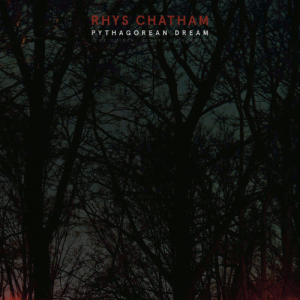 As I develop my pieces, whether they are the new piece I recently did for 100 electric guitars in Le Havre last June, or whether they are my solo performances, I like to tinker with them and develop them. All to say that Pythagorean Dream has evolved since the record came out two years ago. For the concert at Fort Process, while there will be similarities to what we hear on the Foom Label recording, there will certainly be more than a few surprises for those who are already familiar with the music.
As I develop my pieces, whether they are the new piece I recently did for 100 electric guitars in Le Havre last June, or whether they are my solo performances, I like to tinker with them and develop them. All to say that Pythagorean Dream has evolved since the record came out two years ago. For the concert at Fort Process, while there will be similarities to what we hear on the Foom Label recording, there will certainly be more than a few surprises for those who are already familiar with the music.
After making quite a few recordings over a period of, say, a month, I would pick out the ones I like best and score them. Pythagorean Dream is the final result of this process, it is the scored version of me picking the improvs I did that musically worked best, at least to my ears.
Pythagorean Dream was released on the UK label, Foom Records. The record producer, Ben Freeney, having just put out the record, came to a concert that I did in London at The Whitechapel Gallery. He was amazed! He wrote on his Facebook page later that the concert sounded EXACTLY like the record! That was because I was playing from a score, and the score at that point was exactly what was on the record, so no surprises there!It’s really interesting that you’re actively integrating improvisation into composition; I know of very few people who play like that. I know lots of improvisers who kind of re-work stuff, but very few who transcribe and re-work from both improvisational and compositional perspectives. Minimalism is supposedly about minimal parts, but that’s potentially disingenuous — do you feel that your work requires forms of complexity which are more discreet than (say) the modernism of Schoenberg et al?
As I may have mentioned in Round 1, I trained with Pandit Pran Nath and La Monte Young over a period of three years in North Indian classical raga singing. It really left its mark. I had a trumpet teacher here in France come to a concert of mine and hear me play a twenty minute set on trumpet and electronics. He asked me, “but how do you know what to play next?” He was mystified because he was coming out of a place where one improvises over iim7, V7, I changes and the like, and there is a prescribed way of working when coming out of this context. I obviously wasn’t playing over changes, so my teacher had difficulty figuring out what I was doing.The answer was that I was essentially following the forms that I learned at – literally the feet – of Pran Nath and La Monte. It became so ingrained, evidently, that I wouldn’t begin to know how to explain it.
As I was making Pythagorean Dream, I noticed that all the sets tended to be almost exactly twenty minutes. When I realized this was the case, I immediately blamed it all on La Monte and Pran Nath! So it’s not my fault, it’s just the way I was trained!
I watched an interview of yourself before the Liverpool version of Crimson Grail (in what I have to say is one of my favourite pieces of architecture in this country) where you describe the horseshoe / enveloping the audience as a kind of desire to compose something antiphonal — and it struck me that maybe there’s a grandiose influence of Spem in Alium in your music — or is that stretching things too far?
Funny you should mention this, you are the first one to bring it up in that particular way!My father was a harpsichordist and I grew up hearing music from the Queen Elizabethan period wafting about the house, both live and recorded! Music by composers such as John Bull, Giles Farnaby, William Byrd, composers like that. We had a virginals in the house, so my first music lessons came right out of the Fitzwilliam Virginal Book!
This music obviously had a profound influence on me, and as you mentioned, we hear it even now in much of my work.
Also on antiphony – I was wondering the extent to which there is a kind of antiphony formed in Pythagorean Dream, but by a single instrument plus loops?
The idea of antiphony is to hear music from many points of sound, not just two. So rather than hearing music simply in stereo, we hear music from many if not all points of the compass. We hear this in music such as Stockhausen’s Gruppen for three orchestras, or compositions such as my piece for 100-200 electric guitars (or however many it takes to surround the audience!), A Crimson Grail.Pythagorean Dream makes full use of a stereo situation, there is much interplay between what is happening on the left channel, which is working in counterpoint to what is happening on the right, and in the middle, so it is this interplay that you are probably thinking of.
Just to come back to Spem as well — I was wondering if there’s an idea within “minimalism” (for whatever that means) that the baroque / early music, having monotonic pieces, dirges, pedal tones or music that has minimal harmonic development (per se) perhaps has more in common with minimalism than it does “classical” music?
For me, minimalism traces its roots directly back to the music of Perotin and Leonin, the most famous members of the Ars Antiqua style, or the School of Notre Dame. We are speaking here of course of music from the end of the twelfth century to the beginning of the thirteenth. I feel quite close to this music.How did you arrive at the tuning for Side A of Pythagorean Dream –– and do my ears deceive me or is it a tuning system very similar to that of La Monte Young’s on the well-tuned piano?
I first started working with La Monte Young in the early seventies. Back then I earned a living as a harpsichord tuner, so when La Monte played me a tape of a very early version of The Well-Tuned Piano, I offered to tune it for him in exchange for lessons. La Monte generously agreed and taught me his tuning system. So the tuning system that I use in the guitar piece is based on that.
So this is a bit of an open question, but as you’ve mentioned Ars Antiqua – for Pythagorean Dream you’ve used a tuning similar to Young’s Well-tuned Piano, which is a just intonation tuning. Have you ever experimented much with other tuning systems – meantone temperament, for instance?
During my harpsichord tuner days, I was of course called upon to tune in meantone, but I haven’t found it useful in my own pieces. Meantone temperament is somewhere in between just intonation and equal temperament. The advantage of just intonation is that all the pitches are perfectly in tune, with no acoustic beats; but the disadvantage is that one can only play in one key!The advantage of equal temperament is that one can play in all twelve keys; the disadvantage is that they all sound equally terrible! All the pitches are out of tune – some to a greater extent than others – except for the octave, which is the only intervallic relationship in equal temperament that is perfectly in tune.
With meantone, one can play in three keys and everything within the framework of those three keys will be pretty much in tune, the three keys in question being the tonic, the subdominant and the dominant. If one ventures outside of those keys, the intervals will be seriously out of tune.
Some composers liked the sound of the out-of-tuneness; there was one interval that was particularly out of tune called a “wolf tone”. Composers like Giles Farnaby (1563-1640) would purposefully incorporate the wolf tone into their compositions. The Dutch harpsichordist Gustav Leonhardt was a great specialist in playing these pieces. I tuned his harpsichord once for a concert that he did at Carnegie Hall. And of course, he asked that I tune the harpsichord in meantone!
I’m wondering if something with rounder thirds becomes more “third-y” (if that makes sense?) — and obviously fifths are closely tied in with electric guitar. I guess the question is does the instrument inform the tuning system?
Absolutely. The violin doesn’t have any frets, so it can play in any temperament that is called for. It tends to play in tune, which is a problem during pieces for pianoforte and string orchestra. You have the strings playing for a while and then the piano comes in, and it sounds horribly muddy! This is because the strings were playing justly and the piano is in equal temperament, which by definition is out of tune!How do you find playing in different contexts (improvisatory, minimalist, traditional composition, etc) affects the outcome of pieces? Or perhaps – does the instrument or the musical context have a greater influence on the outcome?
I get a lot of energy from the audience when I play at clubs, I have to work harder in concert halls because everyone is seated and listening passively. If I am playing in a club setting, I prefer to play my guitar ensemble pieces, because people tend to be standing and with my guitar pieces, you can jump up and down, especially if it is Guitar Trio! For my 100 guitar pieces, as well as for Pythagorean Dream, those are more concert hall pieces than they are club pieces. I like for everyone to be comfortable listening to them, so seating is preferred in those situations.You’ve been posting a lot of twentieth century composition on your Facebook page with little vignettes of description and insight – perhaps you could talk a little about the reasons behind this?
I’m working on a book about the “downtown” music scene in the seventies and eighties in New York, making The Kitchen a focal point, since I founded the music programme there and was its music director for many years.
Back in the years before the internet, everybody moved into the same neighbourhood in order to be close to each other, see each other’s pieces, exchange ideas, etc. The concerns among composers back then were quite particular, and since I lived through it all I thought I would articulate what was going on in people’s minds by covering all the composers who were a part of it, before it all gets lost in the aether, so to speak!Your ambit of influences (certainly direct ones, like La Monte Young or Riley, etc) are fairly well-heeled — I personally would be really interested to know what music from the last (say) decade or so has got you excited?
I’ve become interested in the direction that electronic dance music has been exploring. I went to last year’s Atonal Festival in Berlin because my friend, guitarist Robert Hampson of the band Loop, was playing a set there. I happened to be playing a set with DJ Dasha Rush in a gallery associated with the Atonal Festival called Kuboraum Berlin, so I checked out was going on and was quite excited by what I heard. Of course, there was dance stuff that was on the commercial side of things, but there was tons of more experimental stuff as well, and what a sound! The concert took place at the cavernous Kraftwerk factory building and turned it literally into a temple of sound.Since then I’ve been collaborating with a French DJ named Chloé (Chloé Thévenin). I played flute on a track of an album she recently put out, One On Other (Kill the DJ Records) . We did a concert together at the Centre Pompidou in Paris last May.
The last time I had been excited about electronic music was in the nineties, with electronica of all kinds and the exciting drum’n’bass movement. I even put out a record with Ninja Tune called Neon in collaboration with an electronic music composer named Martin Wheeler. Then in the first decade of the 2000s I got back into orchestras for electric guitars, and while I’m still heavily involved with that (electric guitar orchestras), I’m seriously considering incorporating electronics back into my solo projects, the way I did in the nineties, but transposed somehow, rebooted, if you like, for the upcoming 2020s.More information can be found at Rhys Chatham’s website. Fort Process 2018 is on 22 September at Newhaven Fort in East Sussex.
